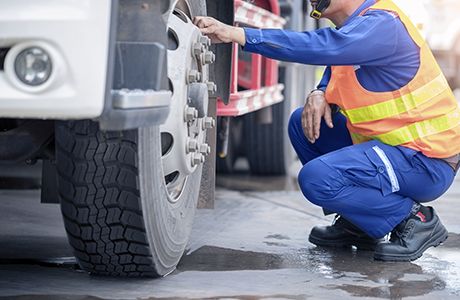
##Let us help you find the right tire##
-
Performance Comprobada
Goodyear Max Series™ meets the maximum requirements of fleets that carry out the most varied types of activities throughout the region.
-
Tires by Application
Check out Goodyear's line of specialty tires for your fleet's driving conditions.
-
Goodyear Technology
Goodyear stands out for the state-of-the-art technologies it incorporates into its manufacturing processes and compounds.
-
Tire Warranty
Warranties backed by our dealer network can give you complete peace of mind.
-
Why Buy Goodyear?
Learn why Goodyear is recognized in the market as a provider of differentiated solutions for the entire life of the tires in your fleet
-
Goodyear MaxSeries
Meet GoodyearMaxSeries ™, our line of premium products for every application and every driving condition in your fleet.
-
Request a Consultation
Request a fleet consultation from a Goodyear truck and bus tire expert.
-
Resources
Find here brochures, catalogs and technical specification sheets for truck and bus tires.
-
Other Goodyear Specialty Tire Sites
Explore Goodyear car and truck, aviation, off-road and other types of tires.
##Let us help you find the right tire##
-
Retreads by Application
Explore the wide variety of retreads that Goodyear has developed to meet the different driving conditions.
-
Goodyear's Retread Advantages
Get long tire life and increase your fleet savings with Goodyear retreads.
-
Request a Consultation
Request a fleet consultation from a Goodyear truck and bus rebuild tire and belt expert.
-
Resources
Find here brochures, catalogs and technical specification sheets for truck and bus rebuilding tires and bands.
##Let us help you find the right tire##
##Let us help you find the right tire##
-
Max Services
More focus on your core business, reducing your fleet downtime and cost.
-
Max Systems
Streamline your work, make more informed decisions, and save money
-
Max Force
Goodyear experts provide everything your fleet needs to find the right products and implement programs that help you save money.
##Let us help you find the right tire##
-
Tips for Tire Maintenance
Minimize tire downtime for your vehicles by following advice from Goodyear experts on care and preventive maintenance.
-
Cost per kilometer
Know the total cost of a tire over time, so you can make informed decisions about the best option to reduce your fleet's operating costs and maximize your company's profits.
-
Cost per Kilometer Calculator
Use Goodyear's Cost per Kilometer calculator and learn why Goodyear costs less to operate its fleet.
-
Fuel Savings Calculator
Calculate your fuel savings with Goodyear. See how much your fleet can save annually on fuel costs.
-
Technical information
Learn more about tire specifications and how it can help you get the most out of your tires.
-
Tire Technology and Innovation
Learn about the latest Goodyear technologies so you can select the right tire for your needs
##Close##







